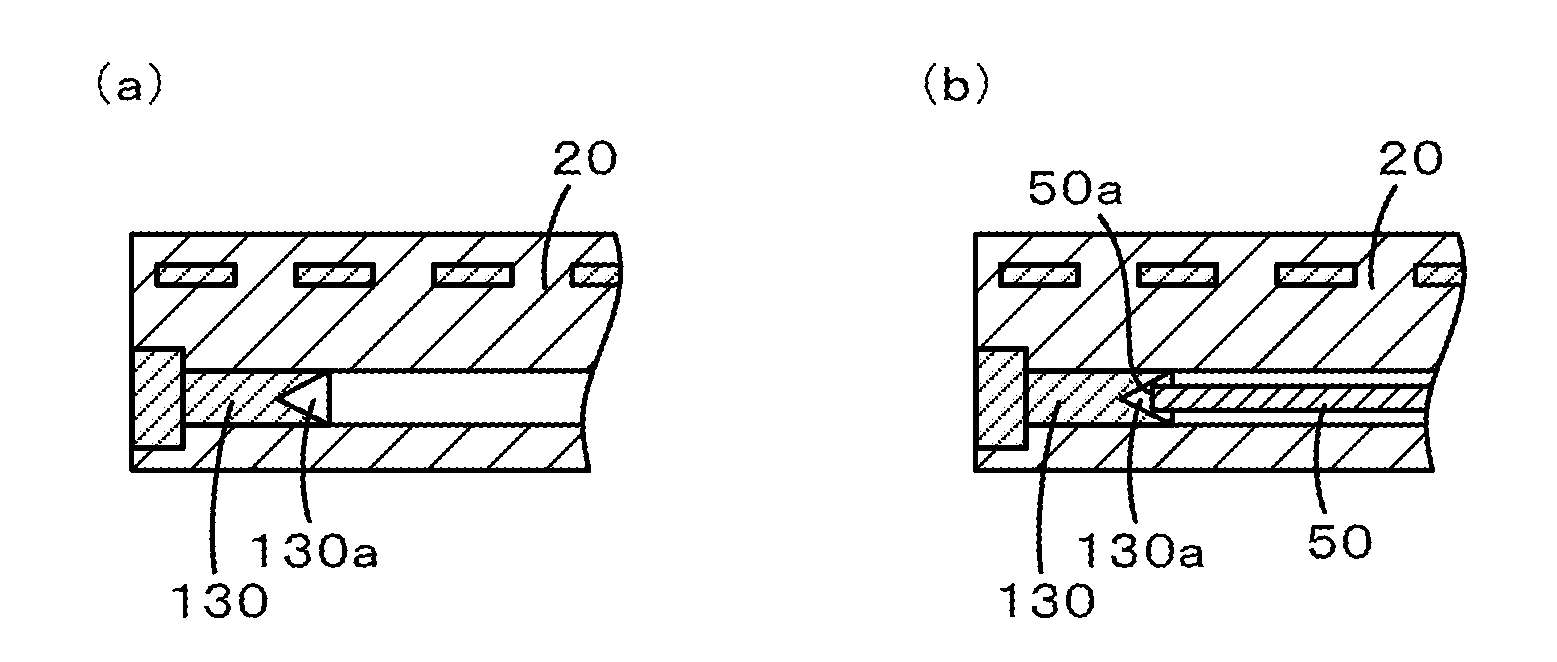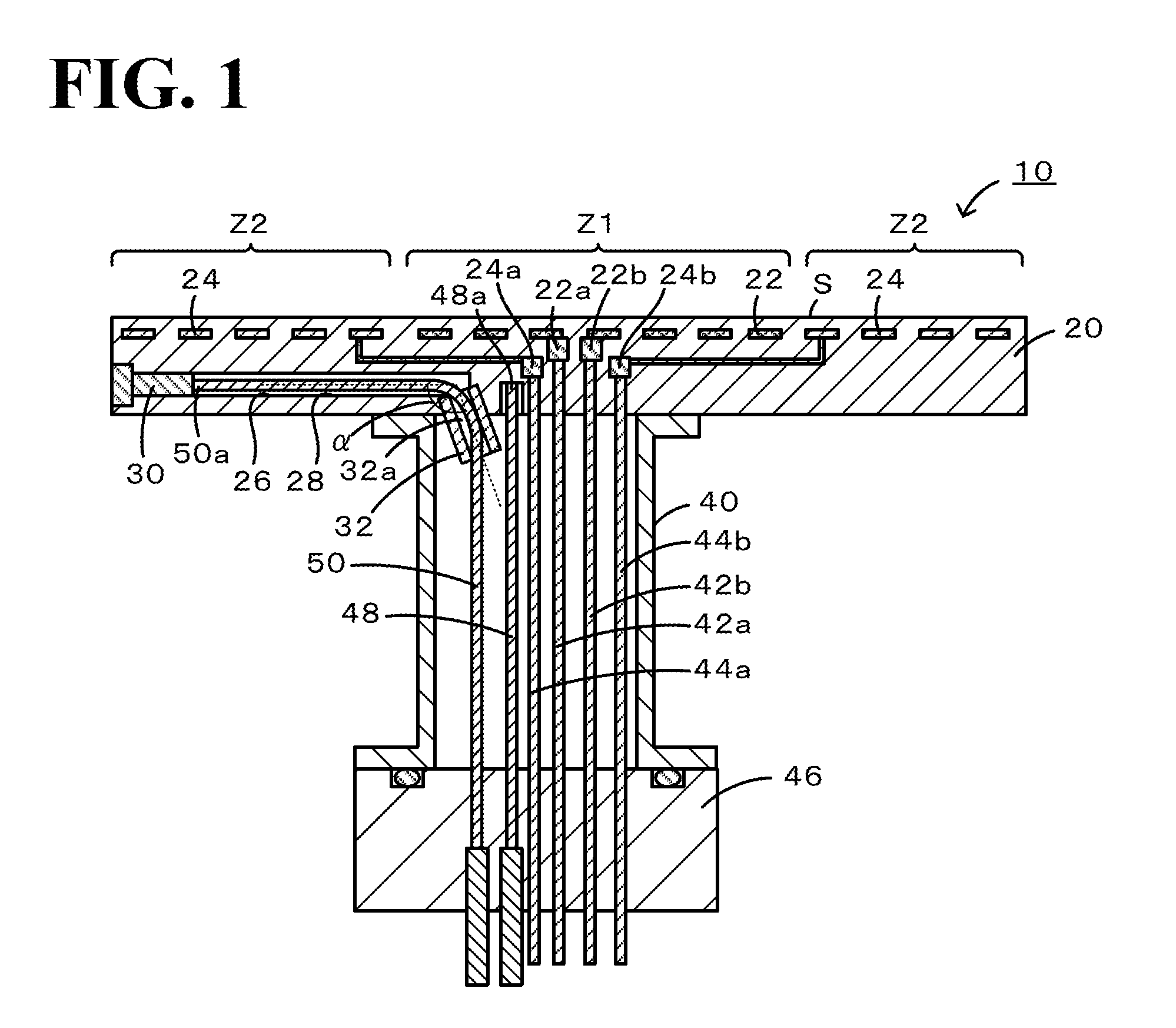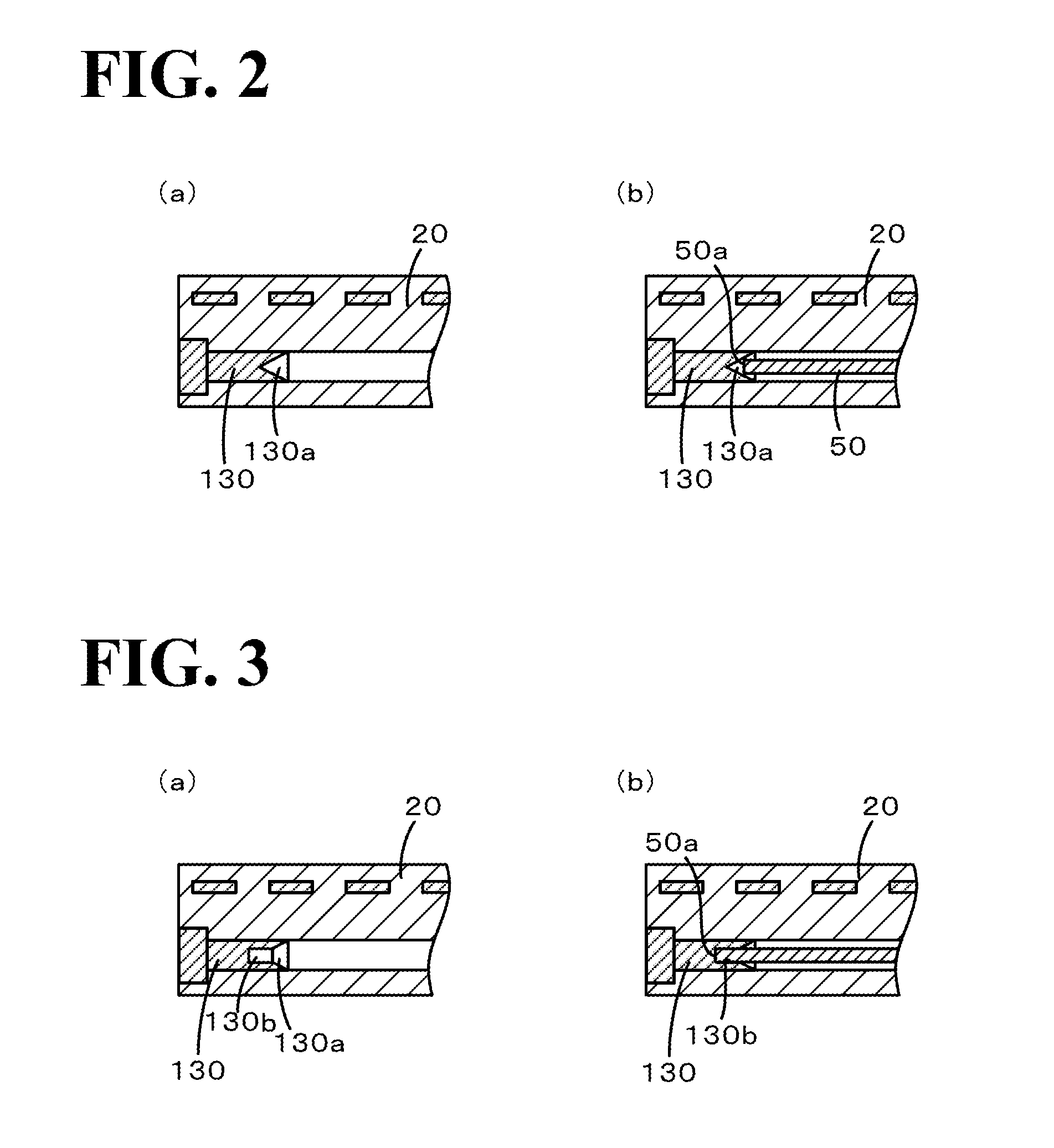Semiconductor manufacturing apparatus member
- Summary
- Abstract
- Description
- Claims
- Application Information
AI Technical Summary
Benefits of technology
Problems solved by technology
Method used
Image
Examples
example 1
[0050]A ceramic heater having the structure illustrated in FIG. 9 was fabricated. The ceramic plate 220 used was made from AlN, had an outside diameter of φ350 mm, and was formed by solid-state bonding the upper and lower thin plates 221 and 222, each having a thickness of 10 mm, so that the bonded interface had hermeticity. The shaft 40 used had a length of 200 mm and an inside diameter of φ50 mm. The closed end of a thermocouple conduit 226 was distanced by 120 mm from the center of the ceramic plate 220. A portion of the thermocouple conduit 226 from an end near the center of the ceramic plate 220 to the tapered portion 224a had a horizontal length L2 of 100 mm, a width in the range of 2 to 3 mm, and a depth the same as the width. The tapered portion 224a had a horizontal length of 10 mm. The tunnel portion224b had a horizontal length L1 of 10 mm, a width of 1.1 mm, and a depth the same as the width. The cross-sectional shape of the thermocouple conduit 226 was a square shape or ...
example 2
[0051]A ceramic heater having the structure illustrated in FIG. 11 was fabricated. Here, whether the outer thermocouple 50 could be inserted into the thermocouple guide 432 after the thermocouple guide 432 had been attached to the ceramic plate 420 and before the shaft 440 and the support base 446 were attached was examined. The outer thermocouple 50 used was a type-K thermocouple including a sheath having an outside diameter of φ1.0 mm and made from SUS304. As the thermocouple guide 432, a pipe having an outside diameter of φ2.0 mm and a thickness of 0.2 mm was used. When the radius of curvature of the arc portion of the thermocouple guide 432 was 40 mm (40 times the sheath outside diameter), the outer thermocouple 50 could be inserted smoothly. Also when the radius of curvature of the arc portion of the thermocouple guide 432 was 30 mm (30 times the sheath outside diameter), the outer thermocouple 50 could be inserted smoothly.
[0052]The present application claims priority from U.S...
PUM
 Login to View More
Login to View More Abstract
Description
Claims
Application Information
 Login to View More
Login to View More - R&D
- Intellectual Property
- Life Sciences
- Materials
- Tech Scout
- Unparalleled Data Quality
- Higher Quality Content
- 60% Fewer Hallucinations
Browse by: Latest US Patents, China's latest patents, Technical Efficacy Thesaurus, Application Domain, Technology Topic, Popular Technical Reports.
© 2025 PatSnap. All rights reserved.Legal|Privacy policy|Modern Slavery Act Transparency Statement|Sitemap|About US| Contact US: help@patsnap.com



